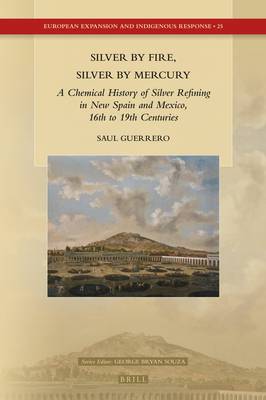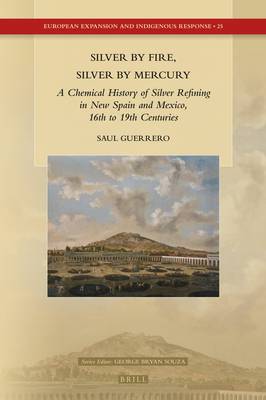
- Afhalen na 1 uur in een winkel met voorraad
- Gratis thuislevering in België vanaf € 30
- Ruim aanbod met 7 miljoen producten
- Afhalen na 1 uur in een winkel met voorraad
- Gratis thuislevering in België vanaf € 30
- Ruim aanbod met 7 miljoen producten
Zoeken
Silver by Fire, Silver by Mercury: A Chemical History of Silver Refining in New Spain and Mexico, 16th to 19th Centuries
Saul Guerrero
€ 290,45
+ 580 punten
Omschrijving
In Silver by Fire, Silver by Mercury: A Chemical History of Silver Refining in New Spain and Mexico, 16th to 19th Centuries, Saul Guerrero combines historical research with geology and chemistry to refute the current prevailing narrative of a primitive effort dominated by mercury and its copious emissions to the air. Based on quantitative historical data, visual records and geochemical fundamentals, Guerrero analyses the chemical and economic reasons why two refining processes had to share production, creating along the way major innovations in the chemical recipes, milling equipment, mercury recycling practice, and industrial architecture and operations. Their main environmental impact was lead fume and the depletion of woodlands from smelting, and the transformation of mercury into calomel during the patio process.
Specificaties
Betrokkenen
- Auteur(s):
- Uitgeverij:
Inhoud
- Aantal bladzijden:
- 468
- Taal:
- Engels
- Reeks:
- Reeksnummer:
- nr. 25
Eigenschappen
- Productcode (EAN):
- 9789004343825
- Verschijningsdatum:
- 28/09/2017
- Uitvoering:
- Hardcover
- Formaat:
- Genaaid
- Afmetingen:
- 155 mm x 235 mm
- Gewicht:
- 843 g

Alleen bij Standaard Boekhandel
+ 580 punten op je klantenkaart van Standaard Boekhandel
Beoordelingen
We publiceren alleen reviews die voldoen aan de voorwaarden voor reviews. Bekijk onze voorwaarden voor reviews.











